
by Ahimsa Porter Sumchai, MD PD (Postdoctoral Fellow)
“We are fighting this toxic genocide all the way to the top of the government ladder.” – Charles A Bonner and A. Cabral Bonner, attorneys for plaintiffs in the Hunters Point Community Lawsuit
“On behalf of named plaintiffs and thousands of other victims to be named, including residents, deceased family members and unborn children,” renowned civil rights attorneys Bonner & Bonner filed a $27 billion lawsuit on May 1, 2018, for damages arising from “generational threats of cancer and other incurable illnesses attributed to the documented fraud perpetrated by US Navy contractor Tetra Tech in assuring Hunters Point residents and the City of San Francisco that the radiation contaminated land at the Hunter Point shipyard had been cleaned.”
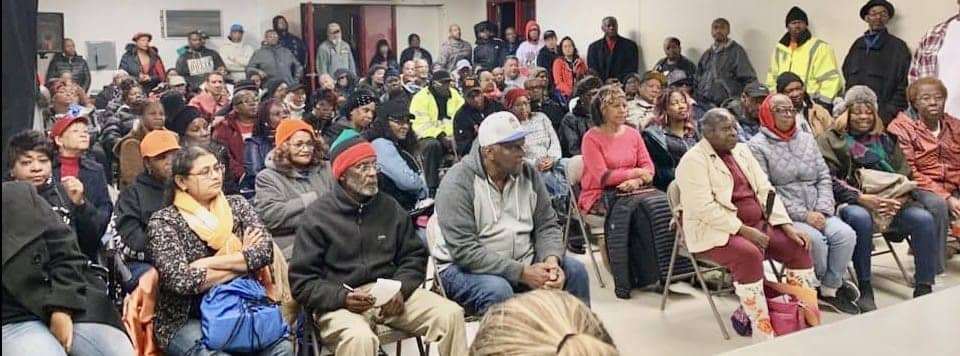
In that historic filing, attorneys for the Hunters Point community lawsuit, Charles and A. Cabral Bonner affirmed, “Scientists, environmentalists and the people of Hunters Point have been pushed back and discredited by government officials and developers … until now!”
In a statement issued in June 2020, Bonner & Bonner notified 9,000 plaintiffs that a 60-day Notice of Proposition 65 Violation had been filed with the California Department of Justice and received by Attorney General Xavier Becerra. That filing was prompted by video captured by Hunters Point hilltop residents of deep soil excavations on the southern hillside in the region designated Parcel A-2.
The Bay Area Air Quality District (BAAQMD) confirmed a dust complaint was filed along with video of a “backhoe” excavator at the fenceline of public housing, schools and recreational centers. According to the Office of Community Investment and Infrastructure: “Land and vegetation clearing work is underway at the site and construction is scheduled to begin this summer,” allowed under the city’s shelter-in-place orders and specifically permitted as “an essential activity” under Mayor London Breed’s executive order.
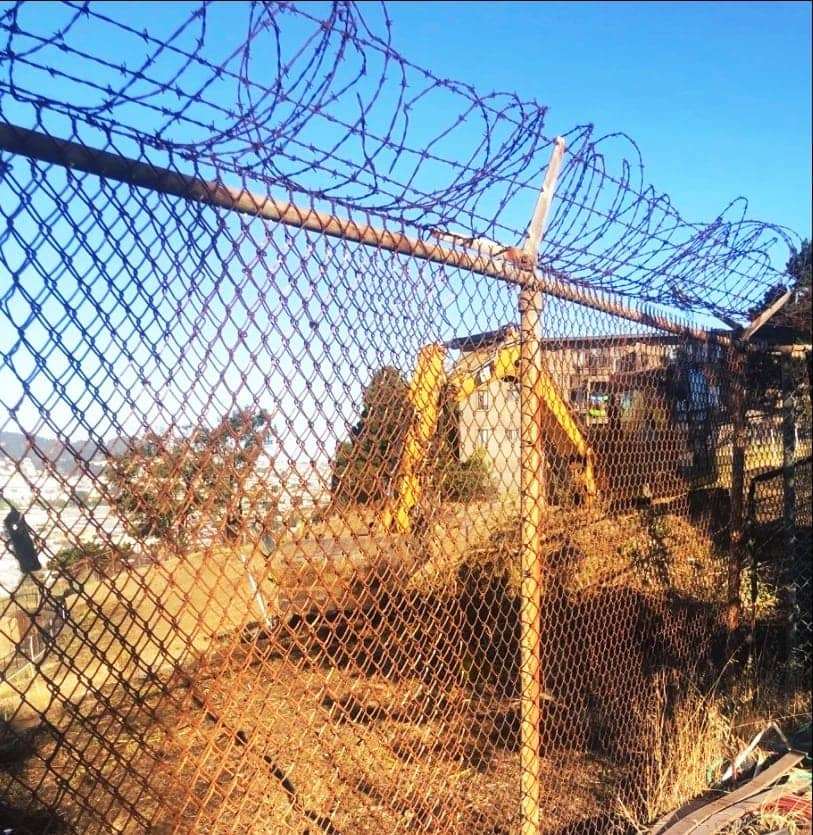
In the San Francisco Public Press article “Bayview Residents Sound Alarm Over Potential Dust From Toxic Site,” investigative journalist Rebecca Bowe revealed that the City allowed earth moving and excavation at the Hunters Point Shipyard despite the clear and present danger posed by the “perfect storm” of high COVID-19 case rates and high levels of air pollution amplified by the worst wildfire season in California history.
Collateral damage
A “fenceline” community is a neighborhood adjacent to a polluting industry that is negatively impacted by chemical, particulate and odorous emissions, traffic routes, noise and hazardous operations that devalue human health, safety and private property. Fenceline communities – like Bayview Hunters Point – are home to people of color, children and the working poor.
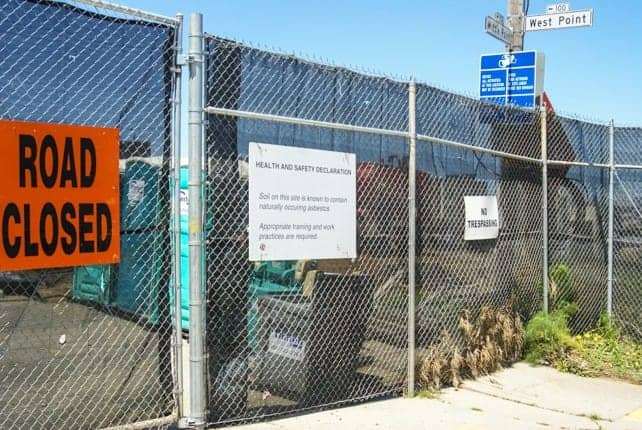
Environmental justice emerged as a “lightning rod” topic during the historic Oct. 22, 2020, presidential debate after Biden referenced his early childhood in a fenceline community next to a Delaware oil refinery. “It’s not a matter of what you’re paying them. It matters how you keep them safe. What do you do? You impose restrictions on the pollutants coming out of those fenceline communities.”

In January 2021, the Biden administration will assume leadership over implementation of the Toxic Substances Control Act, the US law for chemical management. TSCA offers powerful tools to identify people in fenceline communities disproportionately affected by exposure to chemicals and to mitigate risks of environmental exposures.
In June 2020, amidst a global pandemic and a record-breaking wildfire season, soil excavations resumed at the Hunters Point Naval Shipyard Parcel A-2, at the fenceline separating the most contaminated regions of the federal Superfund site from the hilltop community on Kiska Road. This dense residential region includes several public housing developments, Hunters Point Boys & Girls Club and Muhammad University of Islam. Youth comprise up to 39 percent of the hilltop population and median income is only $22,697 annually.
At the southern border of Parcel A-2 sits the radiation-contaminated Parcel E shoreline, Parcel E-2 landfill and the Crisp Road laboratory campus complex used by the US Naval Radiological Defense Laboratories from 1946-1969. Building 815 was the main laboratory and administrative center for the NRDL and is sited on Parcel A-2.
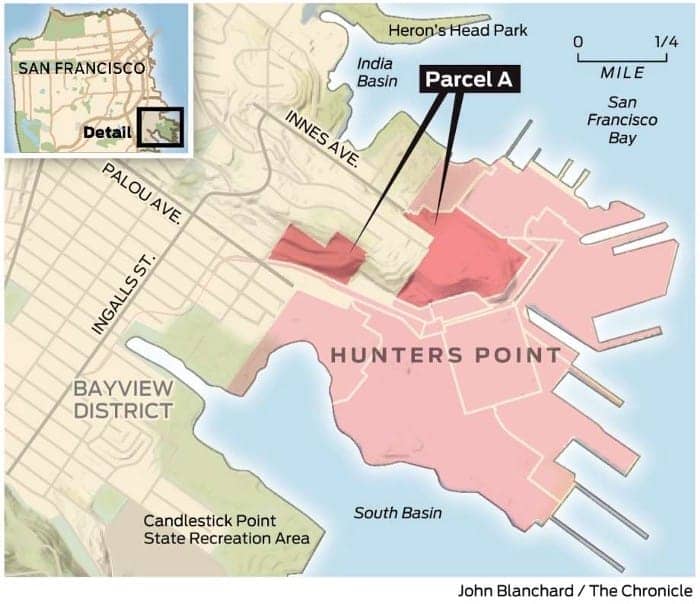
Adding insult to injury, a photo taken in June 2020 by a worker at the fenceline separating UCSF’s Building 830 from the radiation contaminated Parcel E shoreline depicts the Navy conducting backhoe excavations of the radioactive shoreline near Building 815 at the same time Lennar began excavations of the Hunters Point hillside!
In 1991, delegates to the first Environmental Leadership Summit in Washington, D.C., authored the Principles of Environmental Justice. “Environmental justice calls for universal protection from nuclear testing, extraction, production and disposal of toxic hazardous wastes and poisons that threaten the fundamental right to clean air, land, water and food … Environmental justice protects the right of victims of environmental injustice to receive full compensation and reparations for damages as well as quality health care.”
In adopting the San Francisco Precautionary Principle Ordinance, the Board of Supervisors declared in 2003, “Every San Franciscan has an equal right to a healthy and safe environment.” The Precautionary Principle requires careful analysis based on the best available science when threats of serious or irreversible harm or damage to people exist and “lack of full scientific certainty about cause and effect shall not be viewed as sufficient reason for the city to postpone effective measures to prevent degradation of the environment and protect the health of its citizens.”
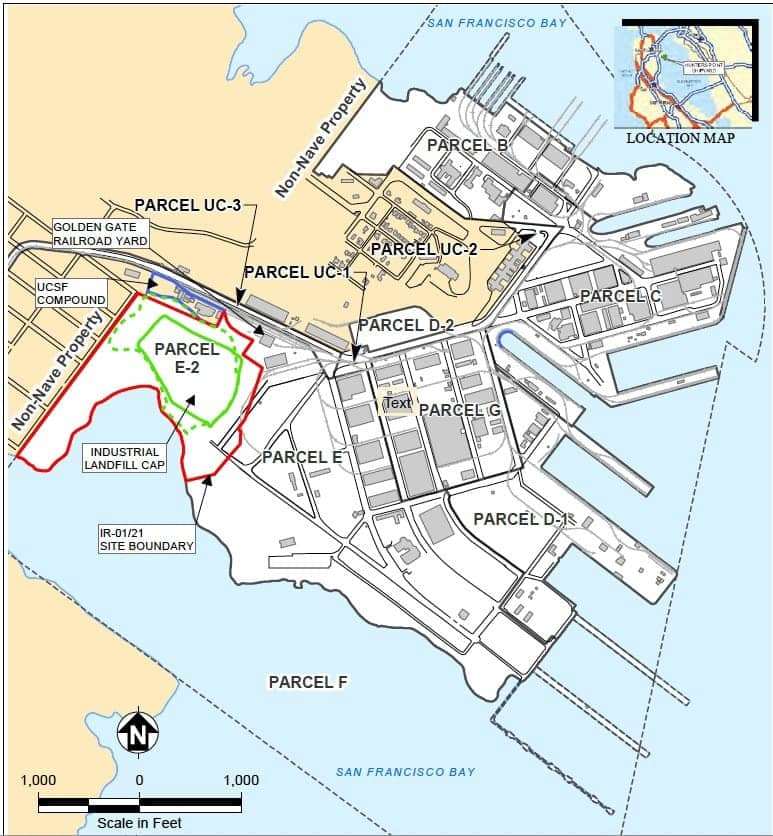
The most high-profile application of the Precautionary Principle in the environmental justice movement in Bayview Hunters Point occurred Sept. 25, 2007, when the San Francisco Board of Education unanimously adopted Resolution 79-25A1 – In Opposition to Lennar Corporation’s Hunters Point Naval Shipyard Development and in Support of the Community’s Demand for a Temporary Stoppage and Independent Health and Safety Assessment to Protect Our Students and Their Families.
Between 2006 and 2007, an estimated 2 million tons of serpentinite rock was graded from the Hunters Point hilltop for an ambitious mixed-use housing development that created Lennar’s new neighborhood complex on Parcel A-1. In 2006, BAAQMD voted unanimously to fine Lennar Corporation $587,000 for failing to monitor asbestos concentration levels following numerous notices of violation issued during grading of the Parcel A-1 Hunters Point hilltop east of Parcel A-2 where new excavations began in June of 2020.
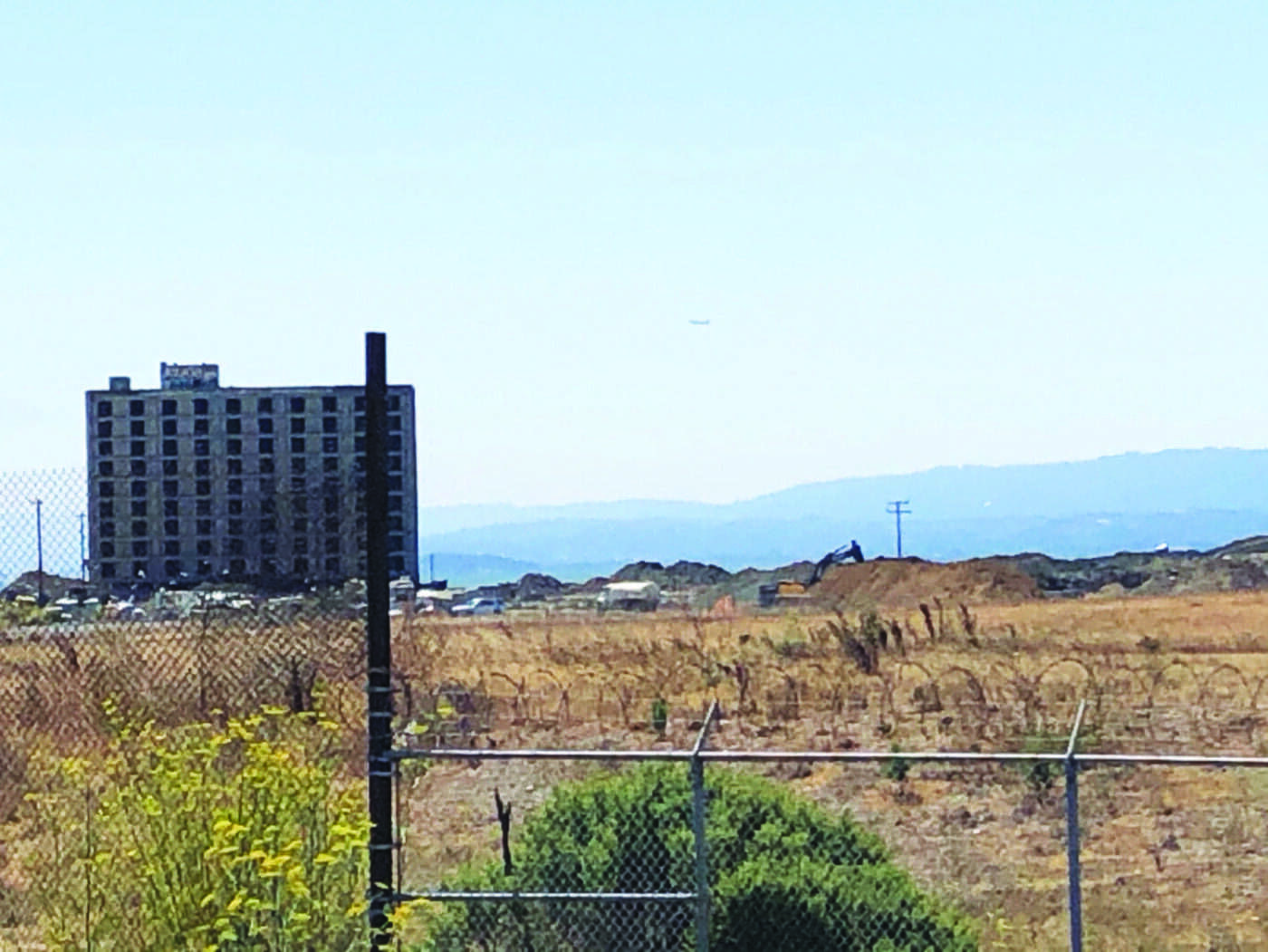
The 2007 Board of Education’s call for moratorium memorializes the audacity of the deceased principle plaintiff of the Hunters Point community lawsuit, Christopher Carpenter. As reported by the Bay Guardian in September 2007 in the article “Green City: Signs of Asbestos,” Carpenter was fired after complaining about dust generated by a backhoe excavating the Parcel A hillside on Oct. 2, 2006.
Christopher Carpenter is revered as a community hero for actions he took to notify hilltop residents and schools of the dangerous dust exposures that triggered work shutdowns at the Lennar construction site. He was fired following a physical altercation with a supervisor who became angry after learning he had notified the hilltop community of the work shutdown.
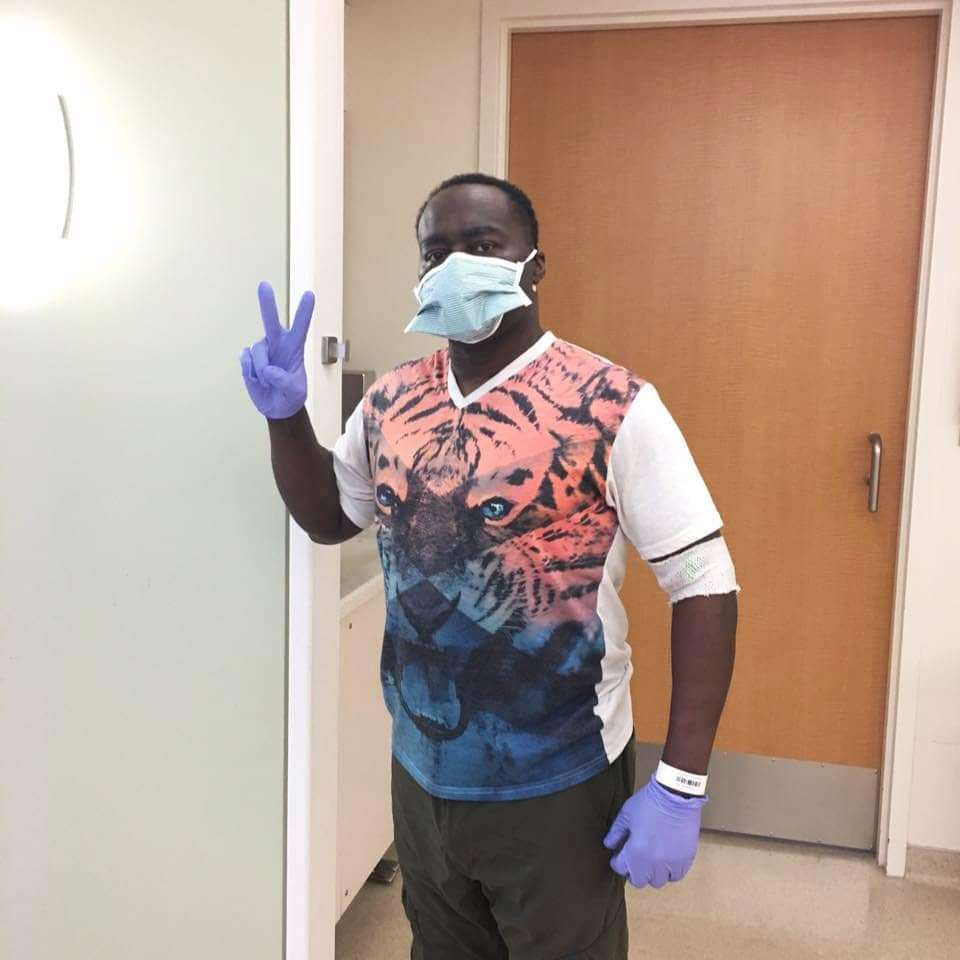
Carpenter sued Lennar contractor Gordon N. Ball in Superior Court for whistleblower retaliation, racial discrimination and infliction of emotional distress. The suit documents Carpenter’s complaints about unsafe and unhealthy work conditions that violated BAAQMD and city health codes. Carpenter lost his job in 2006 and lost his life in 2016 to a rare cancer called peripheral T cell lymphoma, which, in a worldwide review of 584 cases, is associated with electrical workers.
The most spectacular asbestos exceedance occurred May 30, 2008, when a reading of 138,000 fibers per cubic meter was detected and concealed from Hunters Point residents days before the June 3, 2008, election. Proposition G was on the ballot – an initiative granting Lennar permission to proceed with constructing 10,000 new homes on the federal Superfund site.
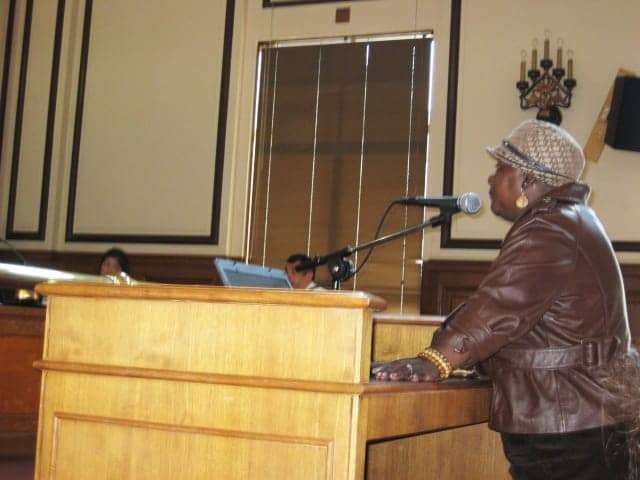
Asbestos detected by air monitors in concentrations higher than 16,000 fibers per cubic meter triggered an automatic work shutdown. No work shutdown occurred and residents were not informed of the astronomical asbestos level until July 14, 2008.
At the July 15, 2008, hearing of the San Francisco Health Commission, residents accused the San Francisco Department of Public Health of turning a blind eye to Lennar’s toxic construction at the Hunters Point Shipyard. Health Director Mitch Katz stated, “Nosebleeds and asthma are normal in children.” Health commissioners reported they had not been informed about the asbestos exceedances being generated by Lennar’s construction and called on Health Director Mitchell Katz to provide an immediate update.
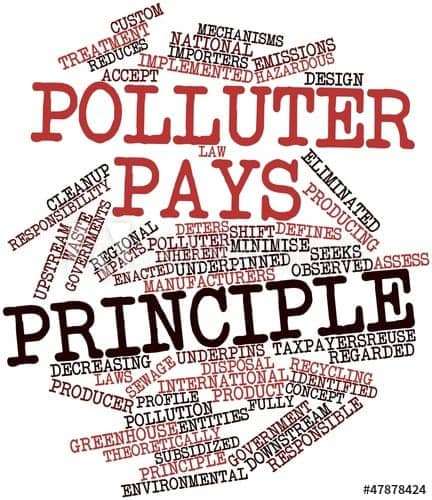
On June 19, 2008, the first Hunters Point Community Lawsuit was filed by 18 residents and workers who sued Lennar, consultants CH2M Hill and Gordon N. Ball in Superior Court on behalf their school aged children who suffered headaches, nosebleeds, skin rashes and cardiopulmonary diseases requiring hospitalization and emergency care during the excavations of Parcel A-1.
Scott v. Lennar, No. A133890, did not prove cause and effect relationships between the documented toxic dust exposures and associated disease but served as a test case for the 9,000-plaintiff Hunters Point Community Lawsuit filed on May 1, 2018, that is currently in mediation. “The court found plaintiffs failed to create triable issues of fact as to exposure to asbestos, other toxins and causation of injuries resulting from the exposures.” The San Francisco Department of Public Health issued evidence against the plaintiffs, arguing: “There is no medical or scientific evidence that dust generated from grading operations on Parcel A poses an endangerment to human health.”
Dr. John Balmes, professor of medicine at UCSF and chief of the Division of Occupational and Environmental Medicine at San Francisco General Hospital, argued against the plaintiffs: “It is highly unlikely exposure to naturally occurring asbestos from grading operations at Parcel A will create a significant risk to health in the community.”
In October 2020 John Balmes, MD, issued an apology and admission to the Bayview Hunters Point community that he “misrepresented (his) relationship with Lennar regarding asbestos dust levels during the grading of Parcel A as an early step in development at the former Hunters Point Naval Shipyard. I was asked by the Department of Public Health to provide advice about the issue of asbestos dust generation during Parcel A construction in 2006-2007.”
The apology came after Dr. Reza Shirazi obtained proof Balmes acted as Lennar’s paid consultant when he issued the opinion used against the parents of exposed symptomatic children in Scott v. Lennar.
Balmes was awarded a seat on the California Air Resources Board in December 2007 and in July 2019 chaired a panel of four “white male UC scientists” in the University of California Review of Shipyard Radiation Soil Standards, announced by San Francisco Mayor London Breed in her February 2019 State of the City address.
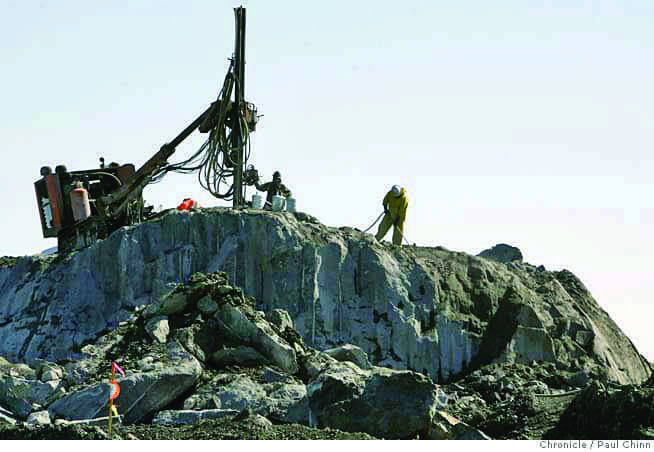
In an audiotaped conference call on Aug. 16, 2019, Balmes revealed to Ramona Tascoe, MD, and myself that the UC scientists believed the 2018 Parcel A gamma scanning was “inadequate” and expected their findings to be censored. In their final report sent to Breed in January 2020, however, the UC scientists “rubber stamped” the gamma scanning conducted on Parcel A and advanced the Parcel A-2 hillside development that began in June of 2020.
The malfeasance of the UC Review and representatives of Mayor London Breed was filed as a complaint with State Attorney General Xavier Becerra and with the City Attorney’s Office. An email exchange between John Balmes, MD, and San Francisco Chronicle investigative journalist Jason Fagone offers solid evidence in support of the Hunters Point Community Lawsuit demand for a construction moratorium:
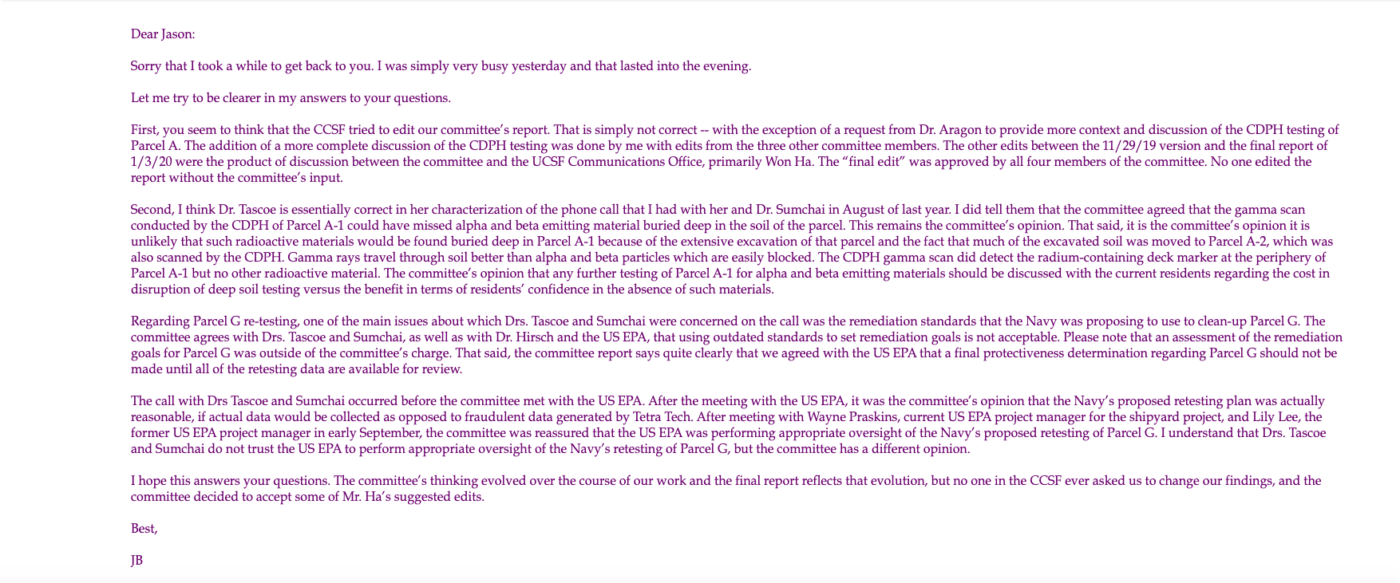
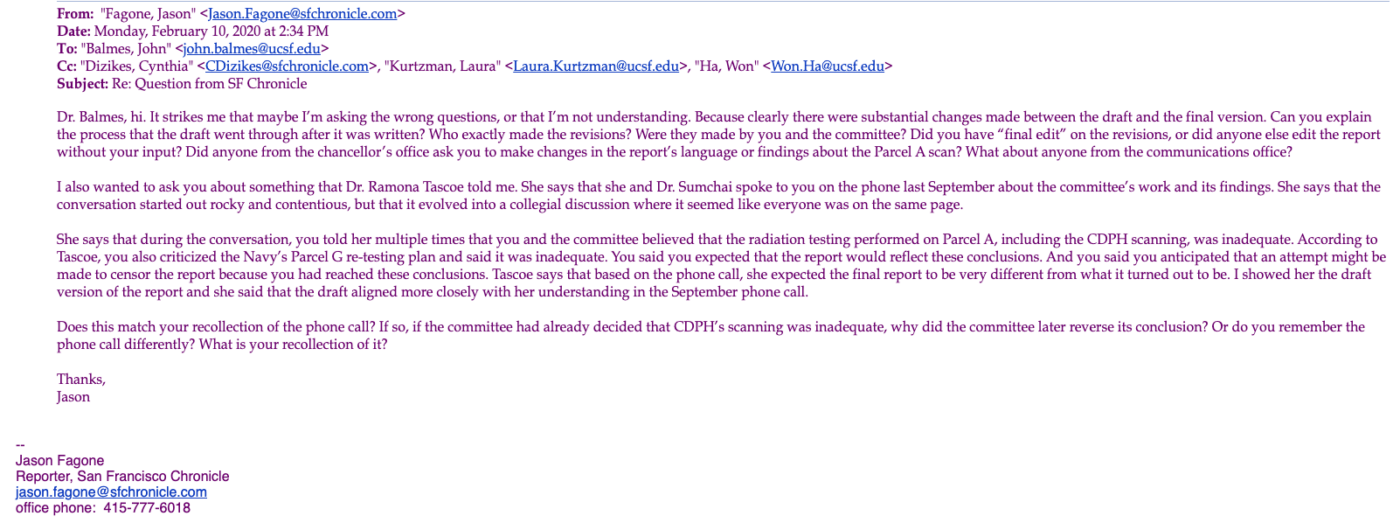
Gamma scanning performed on Parcel A-1 and Parcel A-2 detected a total of 230 above background gamma anomalies they dismissed by health officials as “naturally occurring” radioactive potassium, in addition to the discovery of a gamma emitting radium dial. A similar strategy was used by health officials in 2006 to dismiss as “naturally occurring” asbestos levels detected by air monitors in concentrations as high as 138,000 fibers per cubic meter.
The gamma emitter manganese has been detected in 100 percent of over 2,000 soil samples analyzed at the Hunters Point Shipyard and has a 100 percent detection frequency in urinary screenings of nearby residents and workers. If the California Department of Public Health did not perform conclusive spectral analysis of all 230 above background gamma anomalies detected on Parcel A-1 and Parcel A-2, manganese should be considered a source of the gamma emissions detected by walkover and towed array.
In March of 2011, Hunters Point residents charged government agencies with collusion after 2,000 emails obtained through the Freedom of Information Act documented correspondence between Mark Ripperda of the EPA, Amy Brownell of the San Francisco Department of Public Health and Lennar consultant Rob Balas documenting their conspiracy to downplay health risks of the asbestos clouds residents believe caused asthma, nosebleeds, rashes and headaches in Hunters Point children.
In an email to a Lennar consultant, EPA Remedial Project Manager Mark Ripperda states: “I prefer to keep our message as simple as possible and stay away from health assessments and shut down days.” Ripperda was reassigned after release of the emails led to government hearings in 2011 but remains an EPA project manager.
Brownell survived a unanimous vote by the shipyard’s Restoration Advisory Board to unseat her in 2009, a damning Civil Grand Jury investigation in 2010, two professional licensing investigations and three front page Chronicle investigations that uncovered her criminal and unethical malfeasance.
Brownell is the only SFDPH employee with 25 years of “boots on the ground” experience at the Hunters Point Shipyard.
Under Article 31 of the Health Code – adopted as a city ordinance in 2004 – Brownell and the Health Department are compensated by Lennar developers via the Office of Investment and Infrastructure for earth moving activities at the federal Superfund site. It is speculated Amy Brownell may be protected by a benefactor “all the way at the top of the government ladder” in the office of Nancy Pelosi!
Establishing harm
“A federal Superfund site is, by definition, a property where the Environmental Protection Agency (EPA) used a Hazard Ranking System to calculate a score based on actual or potential release of hazardous substances causing harm to human health. On a scale of 1 to 100, a score of 28.5 or more places a property on the National Priorities List. The Hunters Point Shipyard has a Hazard Ranking Score of 80 overall and 100 for groundwater migration, corresponding to an 80 to 100 percent risk that the ‘toxic stew’ documented to be present at the shipyard will contact sensitive receptors via air, soil, water or ingestible routes. Thus, by legal definition and government classification, the Hunters Point Shipyard is a harmful property, and the negative health effects seen in residents and workers on and adjacent to it, under the Precautionary Principle, must be presumed causal.” – Ahimsa Porter Sumchai, MD PD, “Determination of Harm to Plaintiffs of the Hunters Point Community Lawsuit Due to Tetra Tech EM, Inc. Criminal Fraud and Negligence at the Hunters Point Shipyard, a Federal Superfund Site.”
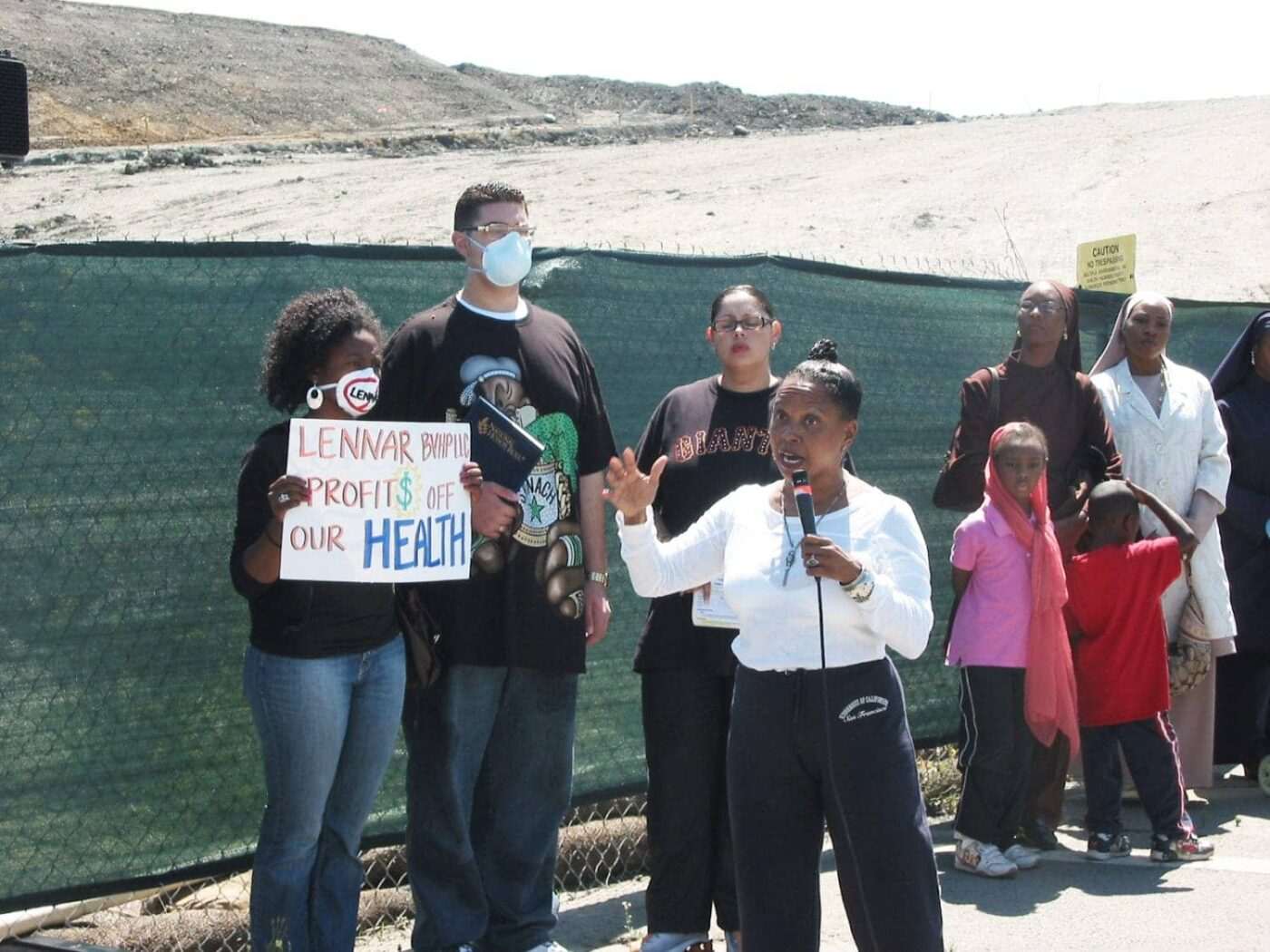
USLegal defines harm as an injury, loss or damage. Harm can be physical or psychological, actual or potential. Harm principle refers to a theory of crime that an action can be banned if it harms someone. As a spiritual principle, harmlessness is the meaning of a word from the oldest attested human language – ancient Sanskrit. That word is Ahimsa.
On May 27, 2020, a Resolution in Support of the Community Harmed by Toxic Substances and Radiation was adopted by the San Francisco Democratic Central Committee. Introduced by District 10 resident Gloria Berry, the resolution was sponsored by DCCC Chair David Campos and 12 elected members. It was adopted with the resolve that “The San Francisco DCCC urges the City of San Francisco, the state of California, the US Navy and the federal government to immediately stop all construction on all sites and further resolves that reparations be paid to the residents of Bayview Hunters Point in the form of healthcare, including toxic testing and personal injury compensation in order to begin repairing the damage caused by years of exposure to radioactive waste and environmental injustice.”
“Hunters Point is unfolding into the biggest case of eco-fraud in US history.” – Jeff Ruch, executive director of Public Employees for Environmental Responsibility, April 9, 2018
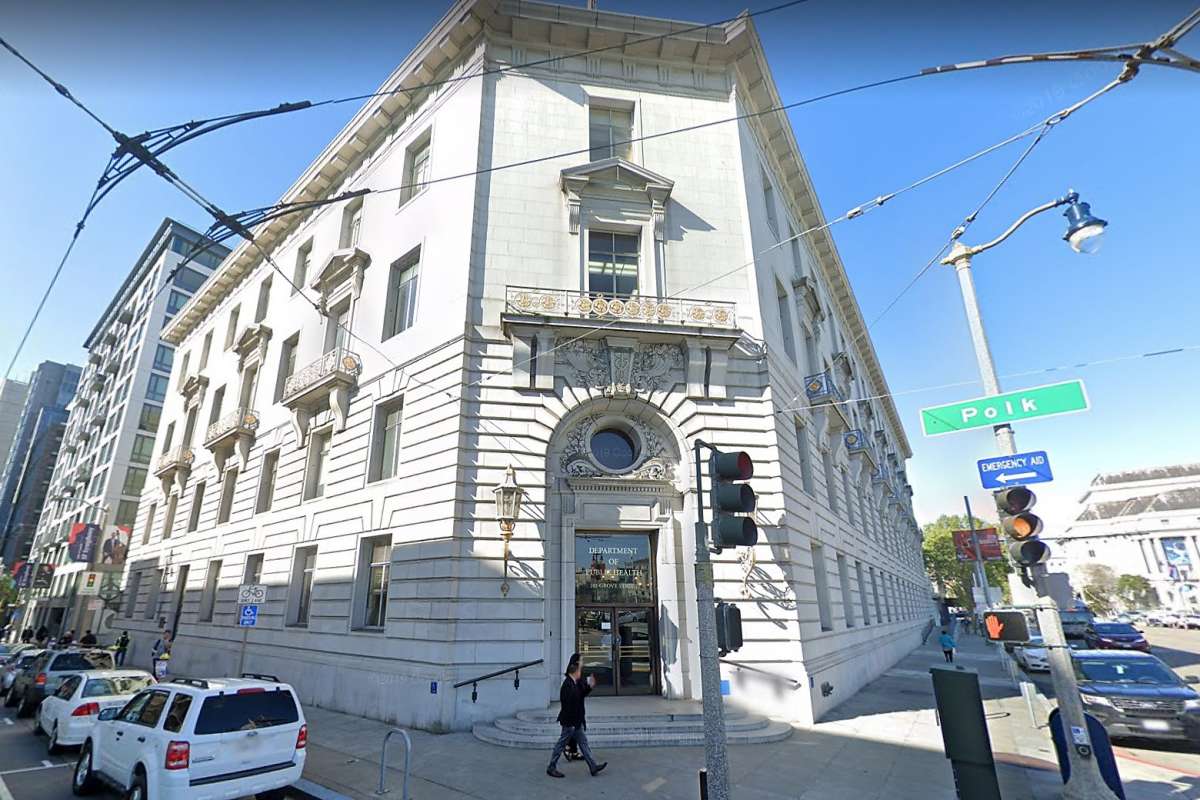
Despite mounting evidence of health disparities linked to toxic exposures in Bayview Hunters Point, human biomonitoring to detect cause and effect relationships between toxic exposures and expressions of disease has never been implemented by the San Francisco Department of Public Health. Testing for lead and other heavy metals, though widely available, was never offered to hundreds of police crime lab personnel sited at Building 606, former site of a radioactive laundry, at the boundary with the radiation-contaminated Parcel E shoreline, where a cluster of environmentally linked cancers and diseases, human and canine deaths and other unexplained incidents are being litigated.
The SFPD class action lawsuit pits “The Boys in Blue v. The Boys in Blue” as the United States Department of the Navy was named as principal defendant by the law offices of Walkup, Melodia, Kelly and Schoenberger. It charges negligent misrepresentation and infliction of emotional distress and wrongful death in the complaint for damages.
“The Navy negligently told the City there was no history of radioactive use of Building 606 and gave San Francisco the green light to use Building 606 despite its status as subject of environmental testing.”
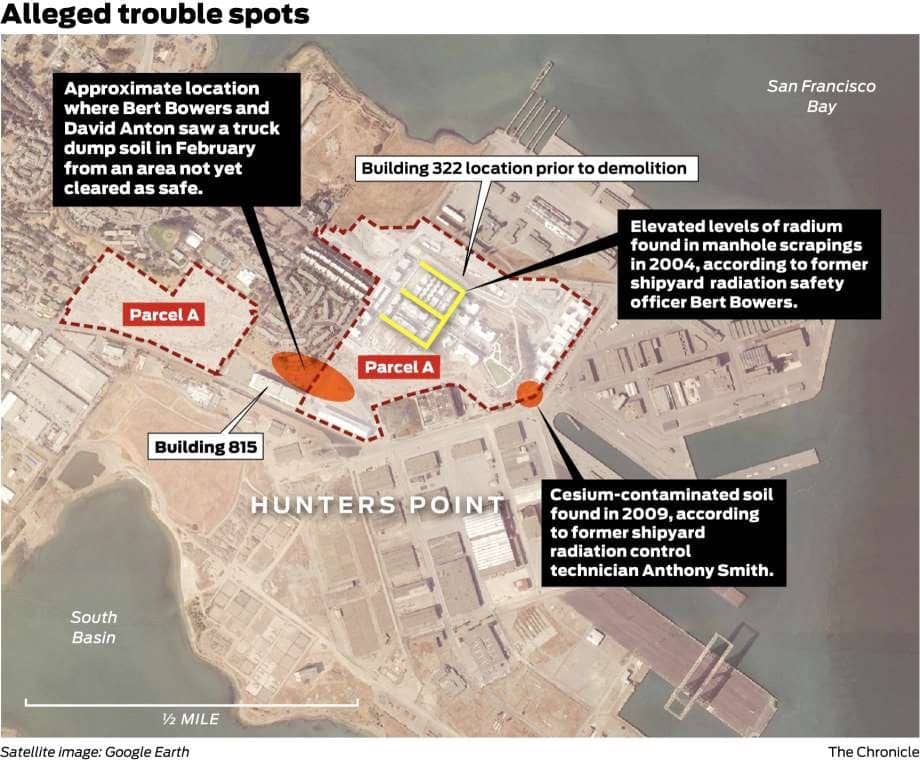
The Hunters Point Community Biomonitoring Program is establishing cause and effect relationships between environmental toxins and expressions of disease. HP Biomonitoring is advancing environmental public health in the implementation of broad community surveys combined with geospatial mapping of toxins detected using a simple, reliable, low-cost urinary screening to detect up to 35 biomarkers of toxic exposure and nutritional deficiency. That screening is conducted by an accredited laboratory using mass spectrometry.
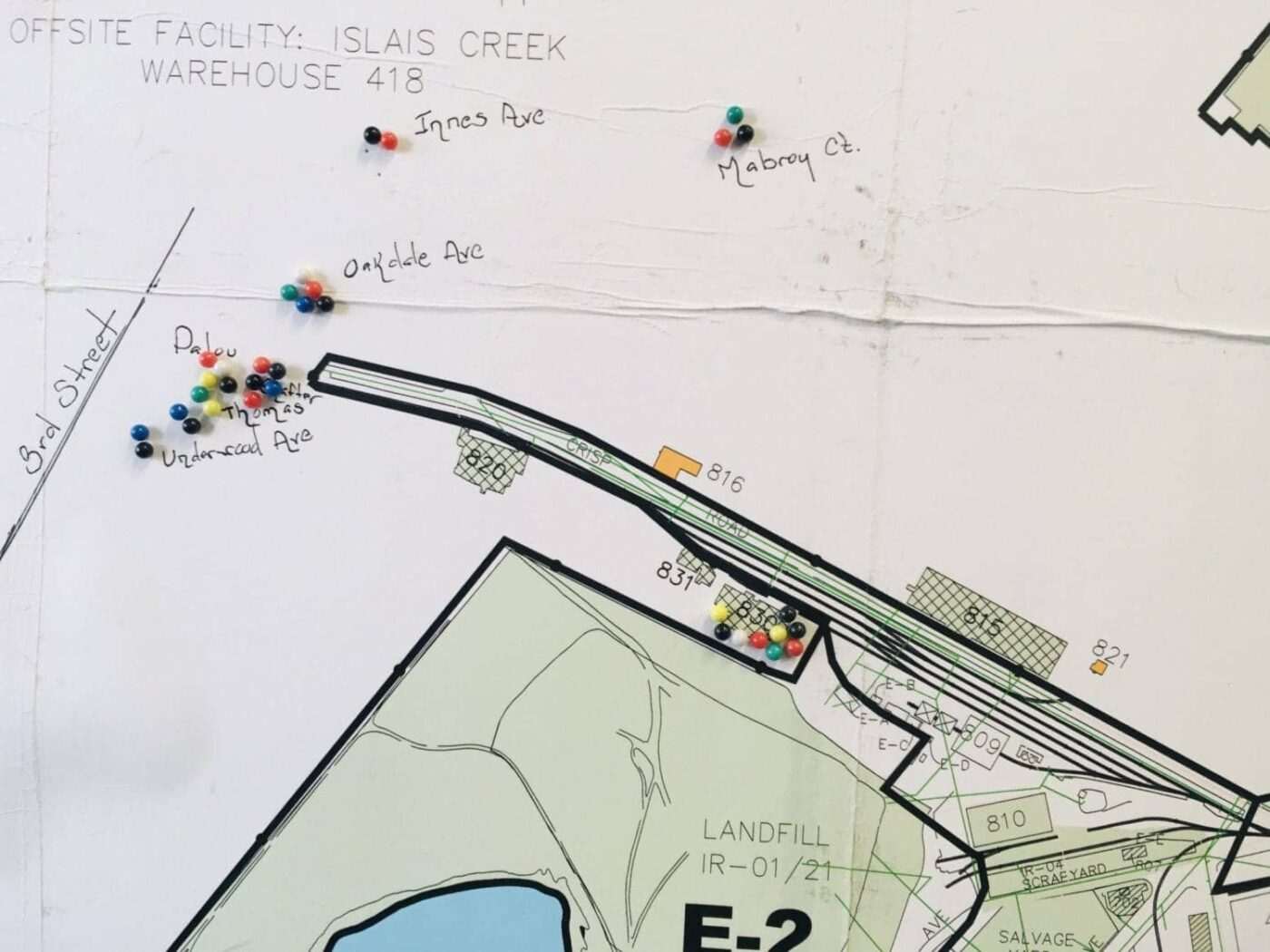
The laboratory screening has been successfully used as evidentiary documentation in civil and criminal proceedings and was introduced into deposition on Nov. 12, 2020, by the attorney representing five UCSF employees sited at Hunters Point Shipyard Building 830, at 75 Crisp Road.
The Hunters Point Community Biomonitoring Program is advancing environmental justice and paving the way for new medico-legal frontiers in substantiating toxic exposures in one of California’s most vulnerable communities:
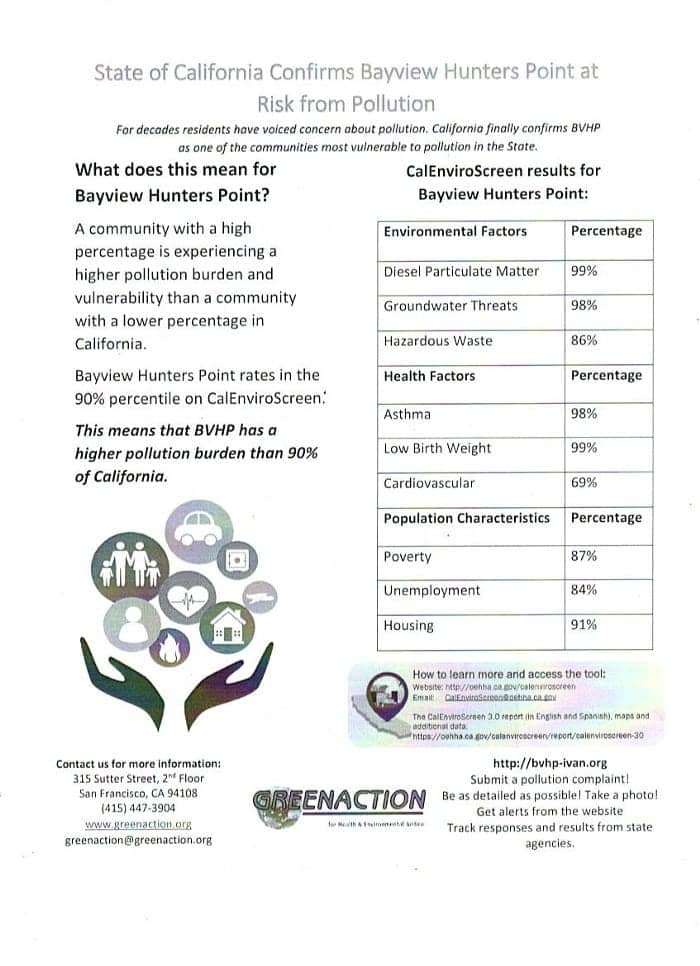
Key plaintiffs of the Hunters Point Community Lawsuit include former SF Bay View editor and publisher Mary and Willie Ratcliff, who have published the neighborhood newspaper for 29 years from their home office near Third and Palou at the shipyard’s historic main entry. Mary Ratcliff stepped down from the editor’s seat last month due to health challenges posed by metastatic breast cancer.
The Ratcliffs, their neighbors and 15 UCSF Building 830 workers have undergone urinary screening that, combined with geospatial mapping, places them in HP Biomonitoring’s ROC (Radionuclides of Concern) cluster, a group of screenings in which multiple designated radionuclides of concern at the Hunters Point Shipyard have been detected. These biomarkers of radiation exposure include uranium, cesium, thallium, strontium, gadolinium, rubidium, the gamma emitter manganese and the alpha emitter vanadium – that when inhaled causes headaches and nosebleeds!
Additional scientific evidence in support of the demand for a construction moratorium is derived from research documenting improvements in mortality and fertility between the years 2005 and 2016 during the decommissioning of eight power plants in California, including the PG&E Hunters Point Power Plant. According to UC San Diego Associate Professor of Environmental Science Jennifer Burney, airborne particulate matter and contaminants “wreak havoc on human health when inhaled.”
Burney combined EPA, NASA and CDC data with county changes in mortality and found the shutdown of power plants saved an estimated 26,610 lives and was associated with a reduction in preterm births in fenceline communities.
The Hunters Point Community Lawsuit entered into mediation with Lennar attorneys on Nov. 23, 2020. The three-pronged community demand calls for a temporary moratorium on all excavation at the Hunters Point Shipyard until both parties – the community and Lennar – can assess the feasibility of safe digging and a mutually agreed upon plan to resume safe digging, along with medical monitoring for five years and monetary compensation.
SF Bay View Health and Environmental Science Editor Ahimsa Porter Sumchai, MD, PD, founder and principal investigator for the Hunters Point Community Biomonitoring Program, founding chair of the Hunters Point Naval Shipyard Restoration Advisory Board’s Radiological Subcommittee and contributor to the 2005 Draft Historical Radiological Assessment, can be reached at AhimsaPorterSumchaiMD@Comcast.net. Dr. Sumchai is medical director of Golden State MD Health & Wellness, a UCSF and Stanford trained author and researcher, and a member of the UCSF Medical Alumni Association Board of Directors.





